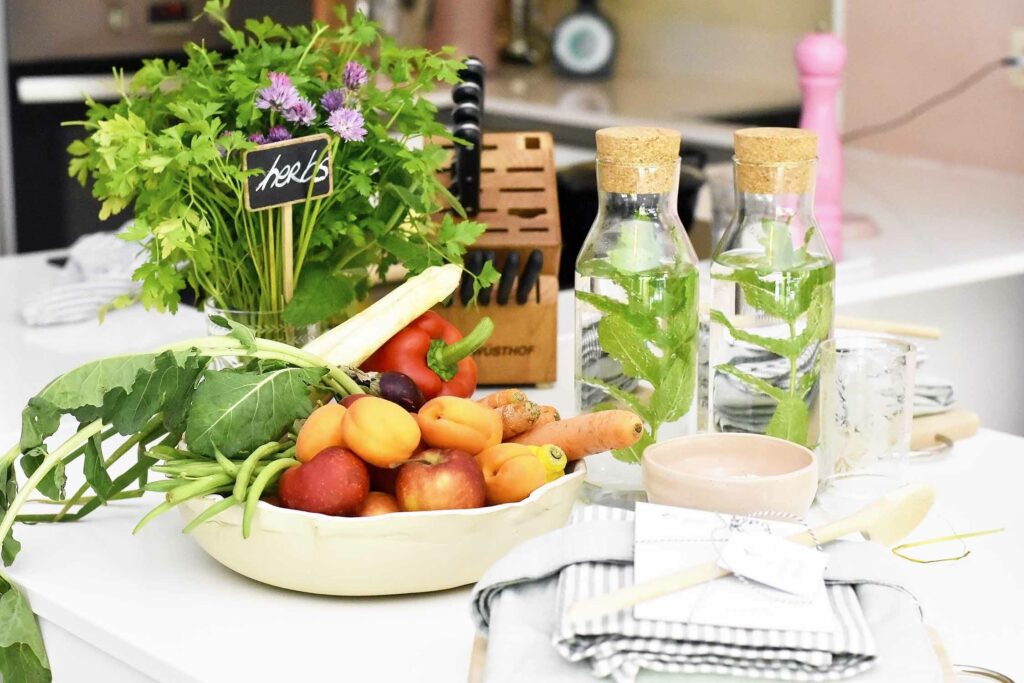Farm-to-table means literary dining where the food is from. It is about sourcing ingredients directly from the producer i.e. the farmer near you, cutting out distributors all together. More and more chefs are choosing for this approach when sourcing their food for their restaurants ( Hallelujah) but how can we, home cooks, adopt it?
To my knowledge, raised by 2 Michelin star chef, most chefs take pride in sourcing their ingredients with care and have done so for many decades. After all, best ingredients, make the best dishes! It is inspiring us, home cooks, to do the same that is an uphill challenge.
Convenience and ignorance are key factors that prevent us from embracing this way of sourcing ingredients. It is much easier and faster to go to a grocery store where everything is nicely laid out for you. But really, are we doing ourselves, our children, any favours by saving time?
According to wikipedia farm-to-table is a social movement started in USA about 20 years ago with chefs like Alice Waters from Chez Panisse and Dan Barber from Blue Hill at Stone Barns addressing the serious impact on our planet and us when we consume genetically modified and dowsed in pesticide vegetables and fruit, transported from afar to your supermarket. They advocate for buying local, knowing where your food is from and eating what is in season. They support farmers markets, encourage growing your own herbs, vegetables and fruit and looking for quality. They and plenty of others are committed to teaching the benefits of farm-to-table lifestyle.
My dad, Chef Willy Slawinski, always sourced his own ingredients and had farmers grow varieties of vegetables just for him. Nobody had heard of a romanesco cauliflower in Belgium 40 years ago, he served them in his restaurants, direct from the farm. I recall the quizzical gaze from the farmer when my dad showed him what he wanted him to grow in a book but it was a huge success! He asked the strawberry farmer to cut his strawberries with a longer stem as it looked better on the plate. He worked with local farmers to source the best ingredients with the best flavour.
Today we know more than 40 yeas ago but we definitely don’t have all the answers yet, as we rarely know what the questions should be. For example what is local? What is organic? and what is sustainable? All very debatable and worthy topics of discussion. My goal here is bring to your attention to the fact only we can bring about change by asking the question: where does our food come from?
5 tips how to start embracing farm-to-table sourcing:
1. START SMALL: check provenance of every ingredient you buy. I was floored last year when on my rare grocery store drop-in, I saw white asparagus from Peru! (I scared some people in the vegetables isle with my profanity). Check what is available to you locally grown or reared. There is a lot of mis-use of the term, so open your eyes and get critical.
2. MAKE ONE CHANGE in sourcing your food. I stopped buying meat and poultry from grocery stores about 3 years ago, I only buy from my local butcher as I trust he sources his meat with care. Make 1 change where you source an ingredient from and make a detour, spend some time with the local shop keeper and enjoy. Before you know it, you will become curious and you will be open for more change.
3. Find out when and where a FARMERS MARKET sets up stalls in your hood. In Belgium even in our capital, we have several markets to choose from. Take a moment to check provenance because not all stalls offer local and seasonal produce. No market near you? Check for a farmer selling direct from the farm. I go every weekend to the market. Due to COVID 19 markets were prohibited for several months so I signed up for a weekly vegetable pack direct from the farm Monde des mille couleurs via the “Best Vegetable Chef 2019″( Gault & Millau awarded) Nicolas Decloedt from HumesXHortense restaurant in Brussels, I shared several dishes over the last 3 months made with those gorgeous ingredients. This weekend is my first time back at the market and can’t wait!
4. GO SEASONAL! pet-peeve of mine, I know, you heard me say it before. It might be hard at first ( really hard) but once you only eat what is in season, you will actually rediscover joy and flavour in food you didn’t know you were missing. I am dying for peaches right now, my favourite fruit in the whole world, and the stalls have some from Spain already, but the season is not yet here so I wait, patiently. Instead I gorge on strawberries, cherries and apricots, in season right now. Every season has amazing produce and yes winter can be challenging. Sometimes I reach for frozen vegetables or fruits just because come March I have been eating root veg for nearly 6 months and variety in our diet is important too.
5. READ. Check out advocates and criticism of farm-to-table, and inform yourself about the pros and cons of sourcing your ingredients with care. Get knowledgeable with facts and accurate data to support better and healthier lifestyle choices for you, your family and the planet. After all we are what we eat.
Chef Barber’s book “The Third Plate, field notes on the future of food” is an eyeopening book with incredible data. It raises compelling questions nobody wants to ask about sustainability and our food. I re-read a different chapter of his book every few weeks to remind myself of the impact of my food choices.
I never stop learning and I today am certainly not perfect in sourcing my food but every time I make a choice I am more and more conscious of my impact.


Written and photographed by Sandra Slawinski without commercial deals.



